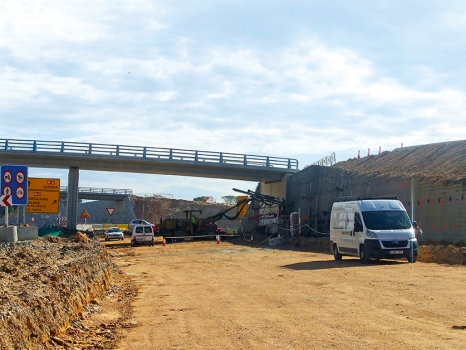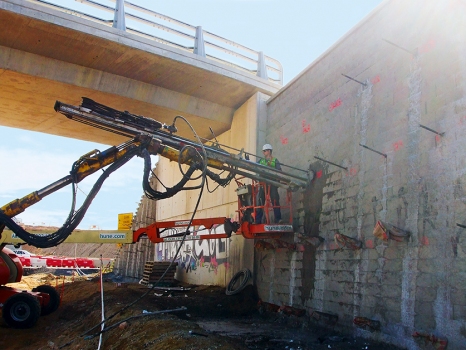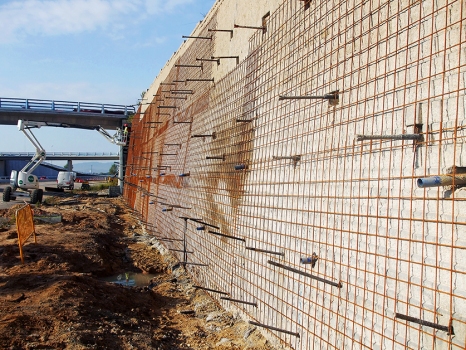New bridges for the development of the National Road II in Girona, Spain
The A-2 Highway – also known as NE Highway – connects Spain's capital Madrid with Barcelona. In some areas, the A-2 has not yet been expanded to a motorway, and traffic is directed via the old National Road N-II.
Media
In the province of Girona in Catalonia, approx. 20.000 vehicles use the National Road N-II per day. Due to the high traffic density, the Public Works Ministry decided to develop the 6 km long section between Sils and Caldes de Malavella near the French border into a motorway.
Work delayed for seven years due to economic difficulties
Work on this section was delayed for more than seven years due to the economic difficulties experienced by one of the companies participating in the construction joint venture. In 2013, Acciona Infraestructuras resumed construction work and successfully completed the section in 2014.
The development of the old N-II into a new motorway also required the construction of new bridges in this area. The abutments of the new bridges are founded on existing retaining walls that were originally built for the construction of the old N-II. The height of the retaining walls had to be partly increased.
To increase their load-bearing capacity, the existing retaining walls were tied back using self-drilling hollow bar anchors. For this purpose, the hollow bar anchors were installed by means of a lost drill bit using rotary percussion, with the hollow bar serving for flushing with water, respectively a water cement suspension. This method allowed mesh to be anchored vibration-free at the walls and then shotcreted. Due to the excellent adhesion between the shotcrete and the retaining wall, no bonding course was required and the surface was closed monolithically. As a result, the load-bearing capacity of the retaining walls was permanently increased.
Due to the flexibility of the hollow bar system, the self-drilling anchors were used both as temporary anchors and as soil nails. The soil nailing served to augment the soil's stability by means of installing reinforcing elements. Soil nailing builds up a supporting structure, with the soil nail being primarily subject to tensile loads.
In this project, the hollow bar system was also used due to the fact that DYWI® Drill Hollow Bars can be installed quickly: They neither require primary drilling nor sheathing. In total, DSI supplied 6,700 m hollow bars and accessories for widening this section of the road.
Structure Types
- About this
data sheet - Product-ID
7559 - Published on:
21/12/2017 - Last updated on:
17/11/2021






